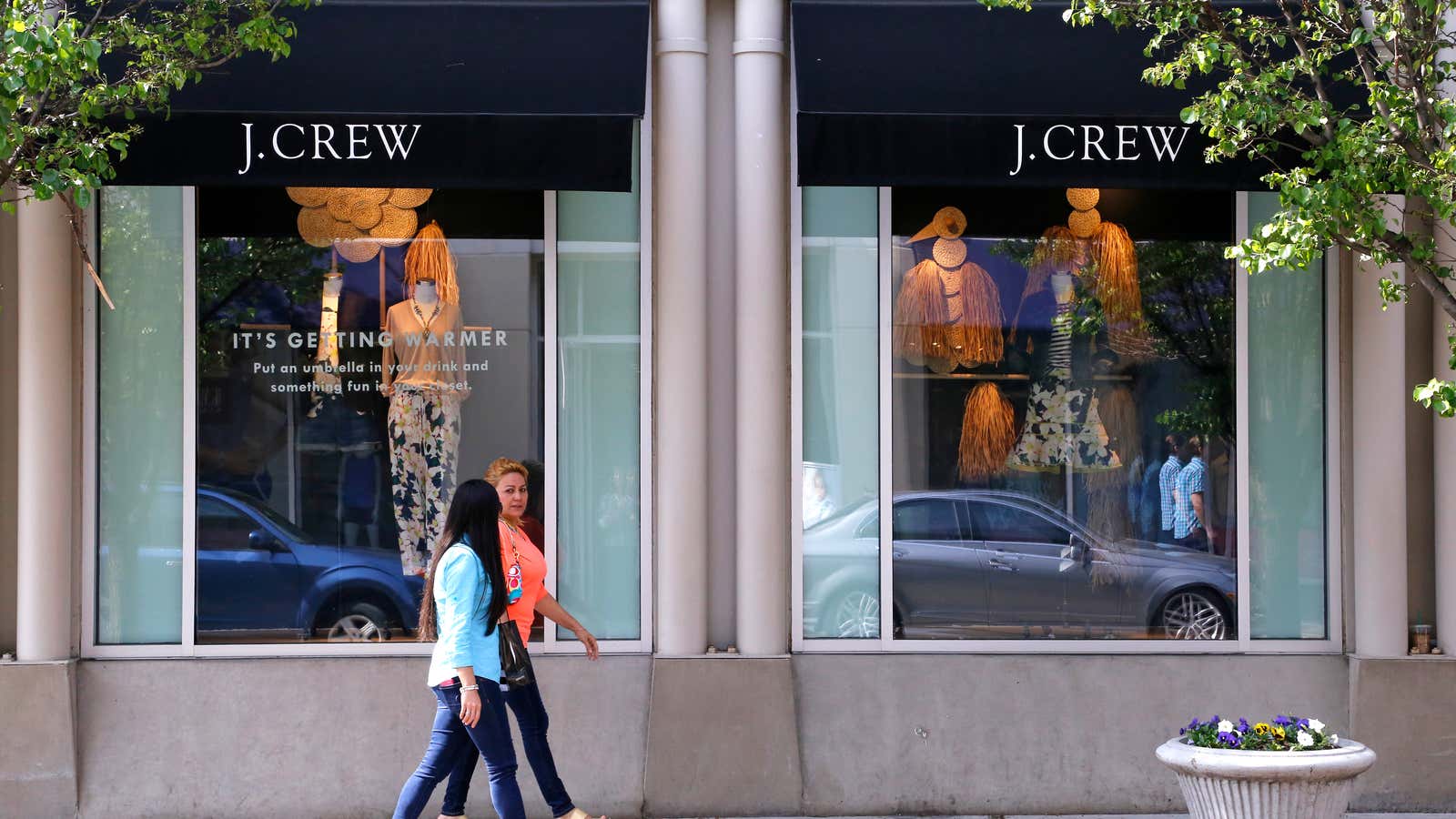Premier preppy-clothing retailer J. Crew announced on Saturday that its CEO of barely two years, Jim Brett, is stepping down and will be temporarily replaced by a committee of four senior executives. Brett’s resignation is the latest of several leadership shakeups at the company in recent years. In a statement, Brett said that despite J. Crew’s recent signs of life, “the board and I were unable to bridge our beliefs on how to continue to evolve all aspects of the company.”
Brett joined J. Crew in July 2017, following the exit of its longtime CEO Mickey Drexler and creative lead Jenna Lyons. While the two had spearheaded the brand’s meteoric rise in the early-2000s, they also oversaw a downward spiral that began in 2013 and continued into this year.
When Brett joined the company, J. Crew was facing more than $566 million in debt. The rocky retail landscape was partially to blame, but missteps by the brand itself—including a big miss on athleisure, non-inclusive size offerings, and a determined adherence to Lyons’s passé take on prep—caused customers to flee for labels more in touch with their needs. While J. Crew’s trendier, denim-focused subsidiary Madewell continued to grow, the narrow, New England prep aesthetic that its parent company was known for no longer resonated.
In response, Brett suggested a complete overhaul: “We must reflect the America of today, which is significantly more diverse than the America of 20 years ago,” he told the Wall Street Journal (paywall) in 2017. “You can’t be one price. You can’t be one aesthetic. You can’t be one fit.”
True to his word, Brett ushered in a wave of changes, both on the business and branding fronts. He cut baseline prices in half, introduced a heavy discounting scheme, and tried to rebrand J. Crew as a more inclusive label with a Universal Standard partnership that introduced extended sizes. To further eschew its preppy roots, J. Crew introduced a series of additional collections, including Point Sur, a line of boho-chic womenswear; and Mercantile, men’s suits on a budget. It even launched a selection of home goods under a “Men’s Home,” category, alongside an in-house home decor label called Compono. Just this week, J. Crew added Nevereven to its portfolio, a womenswear line that it bills itself as “modern” and “utilitarian” and is reminiscent of a pricier Trafaluc or Uniqlo.
While Brett’s strategy appeared to reverse J. Crew’s historical focus on having a distinct aesthetic and appealing to a specific demographic, the changes are beginning to show signs of paying off. In its most recent quarter, the company reported that sales at stores open a year or more rose 1%—it’s first growth in four years. A fifth of the growth was driven by Madewell, which saw comps jump 28%.
But investors were always wary of Brett’s vision. Business of Fashion writes that analysts view the recent changes—which also included a new loyalty program and different fabric suppliers—as contributing to “a watering down of the product.” When the company releases its third-quarter results later this month, critics will get another glimpse at whether their assessment is right.
